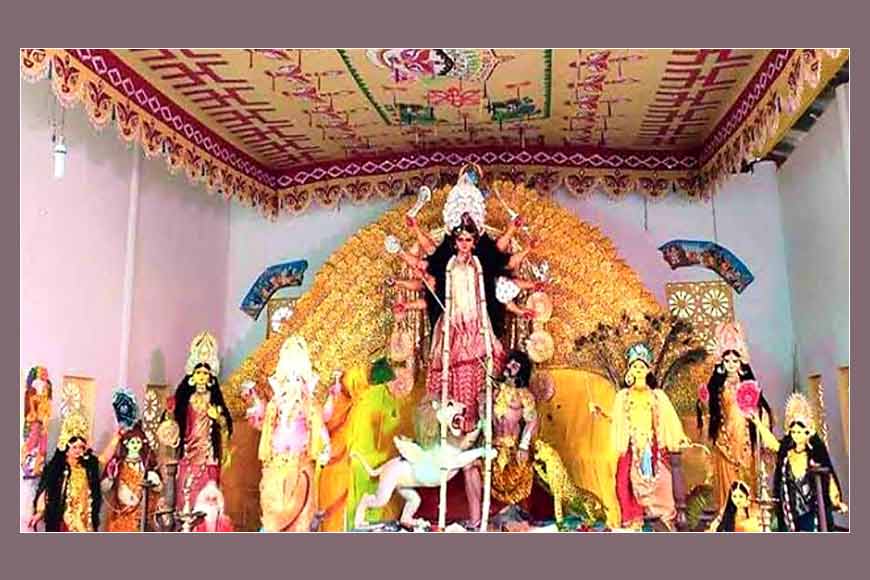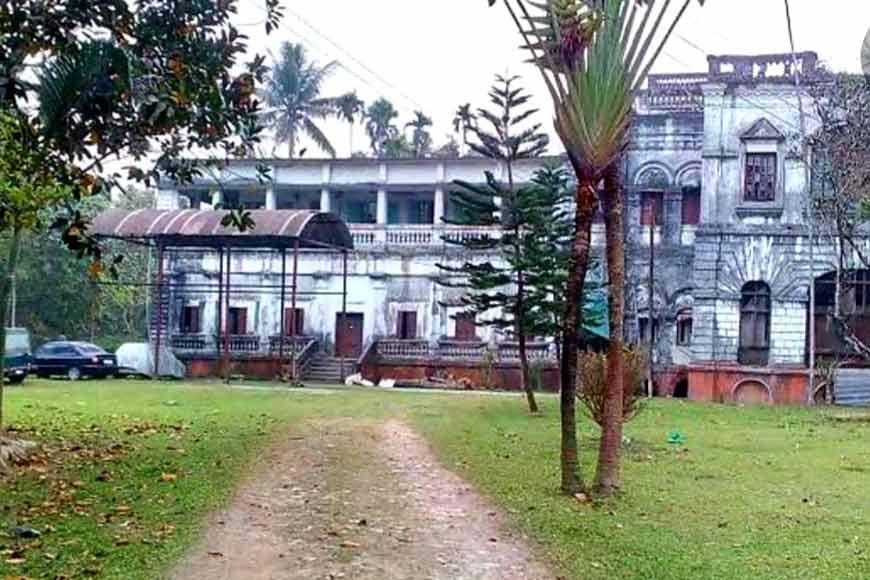Nandotsav heralds Durga Puja at Baikunthapur Rajbari

India's royalty lost their official powers when the nation gained Independence in 1947 but the modern-day royal families continue to adhere to age-old family traditions. Times have changed and so have the financial status of these once-powerful monarchs but when it comes to hosting events like Durga Puja, they do not shy away from spending lavishly and turn the family puja into a grand affair. Baikunthapur in Jalpaiguri is a sleepy town in north Bengal that comes alive from the day Nandotsav begins at the Rajbari (royal palace). This heralds the beginning of preparations for the forthcoming Durga Puja. Nandotsav is a festival celebrated the day after Janmashtami, which celebrates Lord Krishna's birth. It is believed that all the villagers of Vraj visited Nand Baba's house to see new-born Krishna and congratulate Mata Yashoda.
Nandotsav at Baikunthapur Rajbari is a joyous occasion where children participate in ‘Dadhi-kado’ (mud fights) games smearing each other with curd. The ‘Dadhi-kado’ritual is hosted by the royal family. Before the game commences, the priest performs an elaborate ‘kathamo pujo (a formal worship of the bamboo frame on which the idol will be sculpted) of Goddess Durga. Members of the royal family participate in this puja. After this symbolic puja, a flurry of activities begins. There is a ditch adjoining the ‘Nat-Mandir’ (the main temple). The priest pours water and curd in the ditch and readies it for local children and teenagers to swarm in the mud and smear mud at each other. The entire area fills with the ecstatic shrieks of children who revel in the unbridled joy. A small portion of the ‘dadhi-kado’ mud is later collected and stored in the temple premise.
The potter mixes that mud with the clay and begins sculpting the model of the Goddess on the wooden ‘kathamo’ (frame). Nandotsav marks the formal beginning of Idol making. This is a unique ritual that the royal family of Baikunthapur has been following since the puja was initiated centuries ago. This year members of the erstwhile rulers of Baikunthapur Rajbari will be organizing the 513th edition of Durga Puja.

The vintage Durga Puja at Baikunthapur Rajbari attracts visitors from all over the country and even abroad. Locals are proud of their heritage and throng here in large numbers during the Puja. This puja can beat any other well-known ‘barowari puja’ (community puja) of Jalpaiguri. The last two years had been disappointing as Covid-19 pandemic had put a brake to the festivities. Footfalls had decreased drastically and a number of rituals had to be curtailed. However, things have changed this year and the mood is upbeat. The Rajbari is getting a makeover and the family members are planning for a grand affair in a magnum scale to attract and accommodate more people during the festivities.
This Durga Puja is held according to the Kalika Purana text that describes Goddess Kali in her myriad forms and indicates the rituals and sacrifices related to the Goddess. During the four days of puja, goats, ducks and pigeons are sacrificed daily in the Rajbari as an offering to the goddess. This is an ancient ritual that the family has been following diligently.
The sixth day of Devi Paksha is known as Shasthi, which marks the formal beginning of Durga Puja. Early in the morning, the current patriarch of Baikunthapur Rajbari, Pranat Basu offers prayers to two massively elephantine ancient ‘Bot gaachh’ (Indian Banyan trees) which have been thriving in the palace compound since time immemorial. This is the Kalparambha or beginning of Puja. In the evening, the other rituals follow. These include Bodhon (the consecration of Durga idol and unveiling the goddess’ countenance), Amantran (formally inviting Goddess Durga) and Adhibash (sanctifying the stay of Goddess at the venue). On the seventh day of festivities, that is, Maha Saptami, Nabapatrika (nine plants tied together) is given a bath, prior to dawn and then the members of the royal family usher in the goddess and offer prayers, seeking her benign presence.
Ashtami marks the eighth day of the festival and is considered one of the most important days of Durga Puja. Maha Ashtami begins with Mahasnan and Shodashopachar Puja, which is quite similar to Maha Saptami. On Maha Ashtami, nine small pots are installed and nine Shaktis of Durga are invoked in them. All the forms are then worshipped.
Sandhi Puja also falls on Maha Ashtami. The time window of the last 24 minutes of Ashtami Tithi and the first 24 minutes of Navami Tithi is the holy juncture which is considered the most auspicious time. Sandhi Puja is the culmination point and the most important ritual of Durga Puja. ‘Balidan’ or animal sacrifice is made at this sacred juncture. The goddess is worshipped in the fearsome form of Chamunda, who is said to have annihilated two monsters, Chanda and Munda. The Sandhi Puja rituals include worshipping the deity with 108 lotuses and 108 lighted lamps.
On Maha Ashtami night, a unique ritual is followed at Baikunthapur Rajbari. In the dead of night, ‘Ardha-ratri puja’ is performed. This is a secret puja following Tantrik rituals. Ordinary people are barred from even watching the midnight rituals. Only the royal family members actually participate in the puja. During the rituals, a human form is made with rice flour which is sacrificed during the puja – a symbolic recreation of the ancient tradition of human sacrifice.
Maha Navami is the ninth day and the last day of worship just before the festival ends the following day, on Vijaya Dashami. Baikunthapur Rajbari is known to be a stickler for perfection and that is what sets it apart from the other barowari pujas held in the town. Devotees congregate here in large numbers to engage in the annual festival and watch the traditional puja. The present generation of the erstwhile royal family loves to mingle and celebrate Durga Puja with the masses, many of who were their former subjects and still look up to them as monarchs. With Maha Dashami, all festivities come to an end and the long wait for another year begins.











